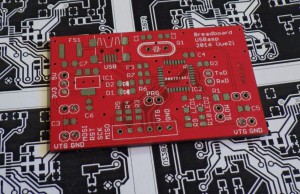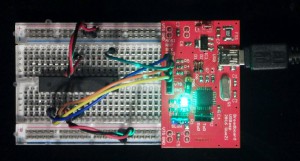project update: a TTL/CMOS computer
Exactly one month later – our electronics course at Uppsala University just approaches its end – and I got the next shipment for my new project: 1.1 km of equipment wire.
Exactly one month later – our electronics course at Uppsala University just approaches its end – and I got the next shipment for my new project: 1.1 km of equipment wire.
Today I received a newsletter from the publisher Elektor. I am offered a special deal on a Peltier power generator which can power an LED light from a small candle. And this for an astonishing price of €99.95 instead of the normal price of €119.95.

I’ll have to buy this – or wait a second…
I know the IKEA LED light Jansjö from the add quite well, so I thought until I noticed that this was an USB rip-off from the same series:
IKEA Jansjö spot light: 3 W power, 88 lumen
IKEA Jansjö USB: unknown power(ca 0.5 W?), 10 lumen
We can supply an LED light with probably 0.5 W and 10 lm from the heat of a candle, isn’t it great?
If we stay at IKEA we can buy these candles, 24 with a burning time of 4 hours for €0,99. These together could light our LED light for a full 4×24 hours = 96 hours. Thus we get a total of 96 h x 0.5 W = 48 Wh or 0.048 kWh for €0,99. This corresponds to €20 per kWh, about 100x more expansive than electricity from the wall outlet (in Germany) – ignoring the downpayment on the gadget itself.
(more…)
It's been a while since I purchased some TFT modules on eBay. These modules come in different sizes and two varieties - with and without integrated touch controller XPT2046. The…
Idea You know the problem - with every new gadget comes a new remote control, and while there are programmable and universal remote controls out there, they will never just…
Inspired by a Youtube video from Bigclive I ordered some Solar Power Rechargeable Flash lights. I knew the risk but I thought it would be a possible way to get hold of some small amorphous silicon solar cell modules for some own projects.
Today I received my package from ebay seller heavends. And yes, these are complete fakes. The glass plate looks like an amorphous silicon solar cell module and even shows the typical brown lacquer finish on the backside, however it lacks all electrical contacts. Inside the plastic body there is a circuit board connecting the three white LEDs to a heat-shrinked soldered pack of two non-rechargeable CR2016 batteries. Current limitation to the three LEDs in parallel connection is only by means of the internal series resistance of the batteries.

This is a follow-up of my most popular post, Hacking an AVR programmer. MX USBasp v3.02 Recently there have been quite a few comments about a new version 3.02 layout…
Most of the time I design and debug my AVR projects on solderless breadboards nowadays. And for that I have been using some different types of programmers by now: starting…
Just a small teaser: today I received my circuit boards from PCBgogo – a layout which I just had sent to the Chinese manufacturer last Sunday.

It is a USBasp, which can be placed on a breadboard and at the same time supplies the power rails on the sides. More to come…

It was not so simple to set up a Raspberry Pi as a 3D-print server as I had hoped. It started with issues with the WiFi-dongle, continued to a complete…